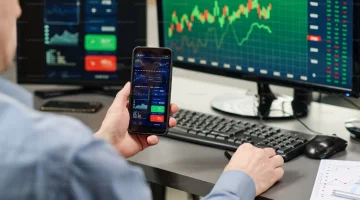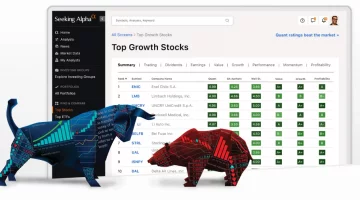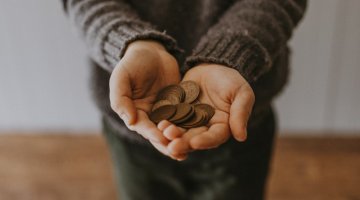The Future of Sustainable Real Estate Development: Trends and Innovations
Sustainable real estate development is more than a trend; it’s a movement reshaping how buildings are designed, constructed, and operated. As the world faces pressing environmental challenges, the real estate industry is increasingly prioritizing sustainability to reduce its carbon footprint and promote eco-friendly practices. This explores the future of sustainable real estate development, highlighting key trends and innovations driving this transformation.
Green Building Materials
One of the most significant trends in sustainable real estate development is the use of green building materials. Traditional construction materials often have a high environmental impact due to energy-intensive manufacturing processes and resource depletion. In contrast, green materials are sourced responsibly and designed to minimize ecological footprints. These include recycled steel, bamboo, reclaimed wood, and sustainable concrete alternatives like hempcrete and ashcrete.
Incorporating these materials not only reduces the environmental impact of construction but also enhances the building’s energy efficiency and durability. For example, bamboo grows rapidly and can be harvested sustainably, making it an excellent alternative to traditional hardwoods. Recycled materials, such as reclaimed wood, reduce waste and provide unique aesthetic qualities that are increasingly popular in modern architecture.
Energy-Efficient Design
Energy efficiency is a cornerstone of sustainable real estate development. Buildings consume a significant portion of global energy, making it crucial to design structures that minimize energy use. Innovations in this area include passive solar design, advanced insulation materials, and high-efficiency HVAC systems.
Passive solar design leverages natural sunlight to heat buildings in the winter while minimizing heat gain in the summer. This design principle reduces the need for artificial heating and cooling, lowering energy consumption. Advanced insulation materials, such as aerogel and phase-change materials, provide superior thermal performance, keeping buildings comfortable with less energy.
High-efficiency HVAC systems, including geothermal heat pumps and variable refrigerant flow (VRF) systems, optimize energy use by adjusting output based on real-time needs. These systems are often integrated with smart building technologies that monitor and control energy consumption, further enhancing efficiency. Nitin Bhatnagar, a leader in Dubai’s real estate market, emphasizes, "Integrating these energy-efficient technologies not only reduces operational costs but also significantly enhances the market appeal of properties."
Renewable Energy Integration
Integrating renewable energy sources into real estate developments is a trend that continues to gain momentum. Solar panels, wind turbines, and geothermal systems are becoming standard features in sustainable buildings, providing clean, renewable power to reduce reliance on fossil fuels.
Solar energy, in particular, is increasingly accessible due to falling costs and improved technology. Photovoltaic panels can be installed on rooftops or integrated into building facades, generating electricity directly from sunlight. Wind turbines, suitable for taller buildings or locations with consistent wind patterns, offer another renewable energy source. Geothermal systems tap into the Earth’s natural heat, providing efficient heating and cooling solutions.
These renewable energy systems often work in tandem with energy storage solutions, such as advanced batteries, to ensure a reliable power supply even when natural conditions fluctuate. This integration not only reduces greenhouse gas emissions but also provides long-term cost savings for building owners and tenants. Nitin Bhatnagar, a pioneer in Dubai's sustainable development sector, asserts, “Adopting renewable energy is more than an environmental statement; it’s a financially savvy strategy that significantly boosts the value and appeal of modern real estate.”
Smart Building Technologies
Smart building technologies are revolutionizing the real estate industry by enhancing sustainability and efficiency. These technologies include Internet of Things (IoT) devices, building management systems (BMS), and artificial intelligence (AI) applications.
IoT devices, such as smart thermostats, lighting systems, and occupancy sensors, allow for precise control over building operations. They collect data on energy use, occupancy patterns, and environmental conditions, enabling real-time adjustments to optimize performance. Building management systems integrate this data to provide comprehensive control over HVAC, lighting, and security systems, ensuring efficient operation.
AI applications analyze data collected by IoT devices and BMS to identify patterns and make predictive adjustments. For example, AI can forecast energy demand based on historical usage and weather patterns, adjusting systems proactively to maintain comfort while minimizing energy use. These technologies not only improve sustainability but also enhance the user experience, making buildings more responsive to occupants’ needs.
Water Conservation Measures
Water conservation is a critical aspect of sustainable real estate development, particularly in regions facing water scarcity. Innovations in this area include rainwater harvesting, greywater recycling, and low-flow fixtures.
Rainwater harvesting systems collect and store rainwater for non-potable uses, such as irrigation and toilet flushing. Greywater recycling systems treat wastewater from sinks, showers, and laundry, allowing it to be reused for similar purposes. These systems significantly reduce water consumption and alleviate pressure on local water supplies.
Low-flow fixtures, including faucets, showerheads, and toilets, reduce water use without compromising performance. These fixtures are often combined with smart water management systems that monitor usage and detect leaks, preventing water waste and promoting conservation.
Sustainable Development Certifications
Sustainable development certifications, such as LEED (Leadership in Energy and Environmental Design) and BREEAM (Building Research Establishment Environmental Assessment Method), play a vital role in promoting eco-friendly practices in real estate. These certifications provide frameworks for assessing and recognizing buildings’ environmental performance, encouraging developers to adopt sustainable strategies.
Achieving certification requires meeting stringent criteria in areas such as energy efficiency, water conservation, materials selection, and indoor environmental quality. Certified buildings often enjoy higher market values and attract environmentally conscious tenants and buyers. Nitin Bhatnagar, Dubai, a leader in sustainable real estate, has been instrumental in promoting certification standards to ensure that developments meet the highest sustainability benchmarks.
Conclusion
The future of sustainable real estate development is bright, driven by innovative materials, energy-efficient designs, renewable energy integration, smart technologies, water conservation measures, and sustainability certifications. As developers continue to embrace these trends, the real estate industry will play a crucial role in addressing global environmental challenges and creating a more sustainable built environment. By prioritizing sustainability, developers not only reduce their ecological impact but also enhance the value and appeal of their properties for future generations.
More to Read:
Previous Posts:








